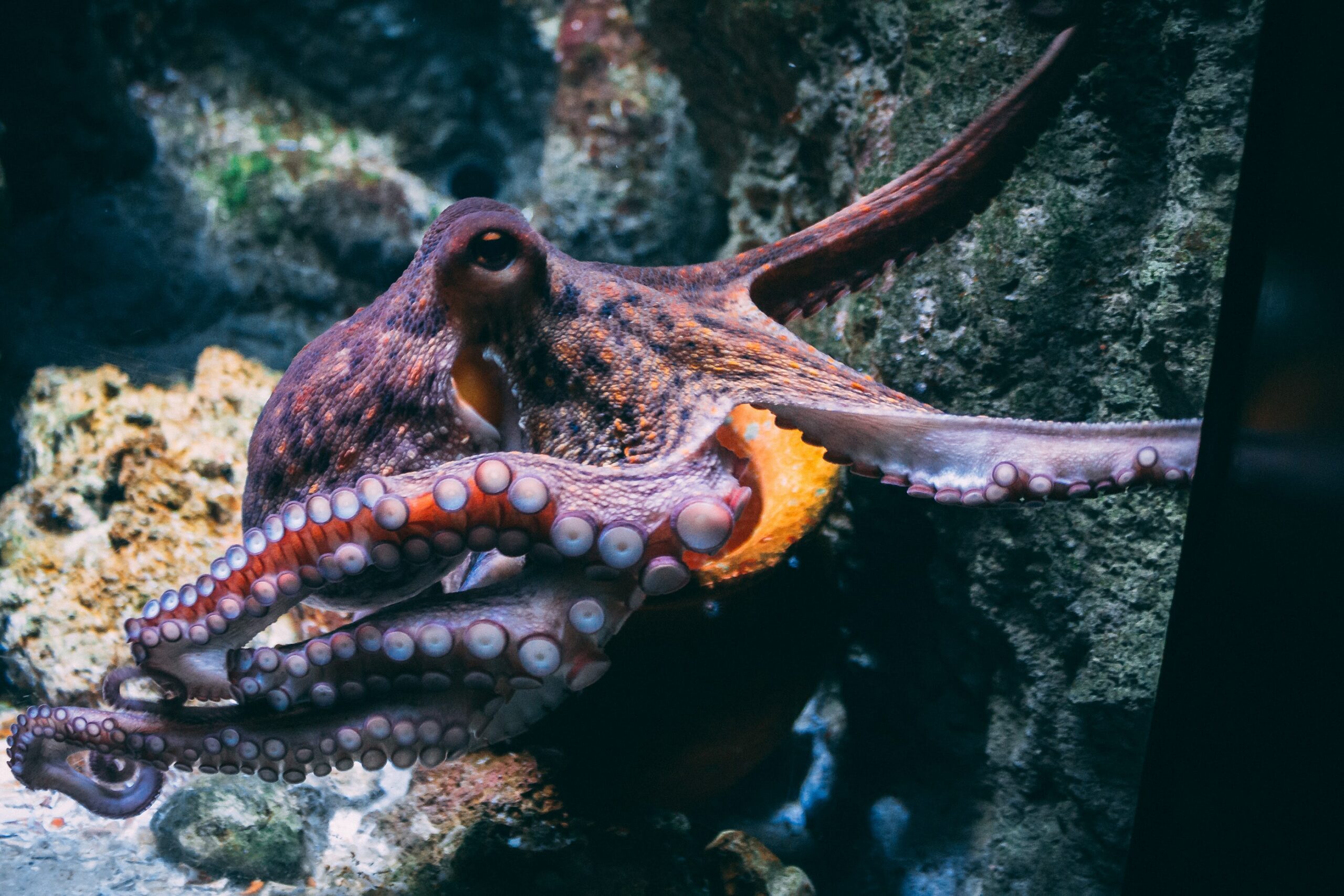The Giant Pacific Octopus holds the record for being the largest octopus species. On the other end of the spectrum, the smallest species of octopus is the Octopus wolfi, measuring just a few centimeters in length.
About Octopus
Welcome to the egg-legged tangling world of octopuses, mesmerizing creatures that dwell in the depths of the oceans. Belonging to the animal kingdom’s order Octopoda and the family Octopodidae, octopuses are known for their unique characteristics, remarkable intelligence, and exceptional ability to adapt to their surroundings.
Bring your arms and your legs wel explore the diverse realm of octopuses, including their various types, size variations, feeding habits, reproduction, lifespan, unique traits, and the distinctions between octopuses and squids. If you are not afraid, dive into the depths and uncover the wonders of these captivating cephalopods!
Octopuses are fascinating creatures with soft bodies and no internal or external skeleton. They possess eight arms adorned with suckers that allow them to grip and manipulate objects with precision.
Their complex eyes, keen sense of touch, and remarkable problem-solving skills contribute to their reputation as some of the most intelligent invertebrates. Octopuses also have the incredible ability to change color and texture, enabling them to blend seamlessly into their surroundings and evade predators.
What makes the octopus unique?
Octopuses possess several unique characteristics that set them apart from other marine creatures. Their remarkable intelligence and problem-solving skills have been the subject of scientific studies.
Octopuses also have an extraordinary ability to change color and texture, allowing them to blend seamlessly into their surroundings or use vibrant displays for communication. Additionally, octopuses are known for their exceptional flexibility and ability to squeeze through small openings due to their lack of a rigid skeletal structure.
Summary
Octopuses are fascinating and enigmatic creatures, showcasing extraordinary intelligence, adaptability, and unique physical traits. Their diverse species, including the Giant Pacific Octopus, Blue-Ringed Octopus, Dumbo Octopus, and others, offer a glimpse into the remarkable biodiversity of the oceans.
As we continue to explore and study these captivating cephalopods, it is crucial to ensure their conservation and protect their habitats for future generations to appreciate and learn from these awe-inspiring creatures of the deep.
Types of Octopus
Blue-Ringed Octopus
The Blue-Ringed Octopus is small & highly venomous, known for its vibrant blue rings and deadly neurotoxin, making it a striking & perilous creature.
Read MoreCaribbean Reef Octopus
The Caribbean Reef Octopus found in warm Caribbean waters, is known for its remarkable color-changing abilities and intricate underwater behavior.
Read MoreCommon Octopus
The Common Octopus is highly intelligent and adaptable, renowned for its remarkable problem-solving abilities and extraordinary camouflage.
Read MoreGiant Octopus
The Giant Octopus, known for its colossal size and elusive nature, is a remarkable deep-sea species that exhibits exceptional intelligence & hunting strategy.
Read MoreMimic Octopus
The Mimic Octopus is a master of camouflage, able to imitate various sea creatures with its shape-shifting abilities, creating the underwater chameleon.
Read MoreSouthern Blue Ringed Octopus
The Southern Blue-ringed Octopus is a small, venomous species with vivid blue rings, delivering potent tetrodotoxin, and inhabiting tide pools, reefs, and shallow coastal waters.
Read MoreWunderpus Octopus
The Wunderpus Octopus is a captivating and rarely seen creature, with its intricate patterns & graceful movements making it a wonder of the underwater world.
Read MoreFAQ’s
1. What is the largest and smallest octopus?
2. What do octopuses eat?
Octopuses are carnivorous creatures with diverse feeding habits. They have a voracious appetite and primarily prey on crustaceans, mollusks, small fish, and other marine invertebrates.
Using their powerful beak, they tear apart their prey and inject it with a venomous saliva that aids in digestion. Some octopuses also engage in hunting strategies such as ambushes or scavenging.
3. How do octopuses reproduce?
Octopuses have unique reproductive processes. Males have a specialized arm called a hectocotylus, which they use to transfer sperm into the female’s mantle cavity. After mating, the female octopus will lay thousands of small eggs and attach them to a protected surface.
She then guards and cares for the eggs, ensuring their proper development. Once the eggs hatch, the female’s life cycle often comes to an end, as she succumbs to senescence.
4. How long do octopuses live?
The lifespan of octopuses varies among species. Most octopuses have relatively short lifespans, typically ranging from one to five years. However, there are exceptions. The Giant Pacific Octopus, for instance, can live up to five years or more, while the deep-sea-dwelling Dumbo Octopus may have a longer lifespan due to their stable and less energy-demanding environment.
5. What is the difference between an octopus and a squid?
While both octopuses and squids are members of the same cephalopod class, there are notable differences between the two. Octopuses have eight arms, no fins, and a rounded mantle, while squids possess ten arms, two of which are longer and used for capturing prey. Squids also have a streamlined body with fins, enabling them to swim at faster speeds compared to most octopuses.
Sources
- Burnie, David & Wilson, Don, Animal, Smithsonian Institute, Washington DC.
- Hickman et al, Integrated Principle of Zoology, McGraw Hill, Boston.



































































